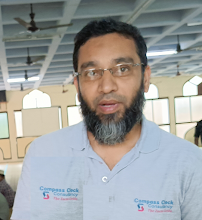Course Duration: 6 Months
Mode: Classroom / Online / Hybrid
Eligibility: Beginners & Experienced Artisans
Certification: Provided upon successful completion
Course Syllabus
Module 1: Introduction to Embroidery & Aari Work
-
History and cultural significance of embroidery and Aari work
-
Differences between hand embroidery, Aari embroidery, and machine embroidery
-
Understanding fabrics, threads, and needles for embroidery
-
Tools and materials used in embroidery (hoops, frames, tracing tools)
-
Design placements and tracing techniques (freehand, carbon, and stencil methods)
Practical Assignment:
-
Setting up an embroidery frame and tracing basic designs on fabric
Module 2: Basic Hand Embroidery Stitches
-
Running stitch, backstitch, and stem stitch
-
Chain stitch, split stitch, and satin stitch
-
Lazy daisy, feather stitch, and herringbone stitch
-
French knots, bullion knots, and buttonhole stitch
Practical Assignment:
-
Create a hand-embroidered sampler with basic stitches
Module 3: Aari Embroidery Techniques
-
Introduction to Aari embroidery tools (Maggam work needles)
-
Basic chain stitch techniques using the Aari needle
-
Creating floral motifs and paisley designs
-
Advanced stitches: zigzag, mirror work, and shaded embroidery
-
Blending traditional and modern Aari embroidery
Practical Assignment:
-
Create a floral Aari embroidery design on silk fabric
Module 4: Advanced Embroidery & Embellishment Techniques
-
Introduction to embellishments (beads, pearls, sequins, Kundan work)
-
Zardozi embroidery (gold and silver threadwork)
-
Cutwork and appliqué embroidery
-
Mirror work embroidery techniques
-
Kashmiri embroidery styles (Aari and Sozni work)
Practical Assignment:
-
Design and execute a mixed embroidery piece using embellishments
Module 5: Bridal & Couture Embroidery
-
Bridal embroidery trends and designs
-
Heavy embroidery techniques for wedding wear
-
Combination of Aari, Zardozi, and beadwork for bridal outfits
-
Embroidery on delicate fabrics (net, georgette, silk)
-
Creating layered embroidery effects
Practical Assignment:
-
Create a bridal embroidery sample for a lehenga or blouse
Module 6: Digital Embroidery Techniques
-
Introduction to machine embroidery software (Wilcom, Hatch, or PE Design)
-
Understanding digital embroidery file formats (DST, PES, EXP)
-
Creating and digitizing embroidery designs
-
Using computerized embroidery machines
-
Troubleshooting common digital embroidery issues
Practical Assignment:
-
Create and digitize a custom embroidery pattern using software
Module 7: Embroidery on Different Fabrics & Textures
-
Working with cotton, silk, velvet, and synthetic fabrics
-
Techniques for embroidery on sheer fabrics like organza and net
-
Padded embroidery for a raised effect
-
Thread blending and shading techniques
Practical Assignment:
-
Embroider a custom design on delicate fabric
Module 8: Finishing, Preservation, and Business Skills
-
Securing stitches and preventing unraveling
-
Proper lining and backing for embroidery pieces
-
Washing and caring for embroidered fabrics
-
Starting an embroidery business (pricing, client orders, marketing)
-
Selling embroidered products online and in exhibitions
Final Project:
-
Create a fully embroidered garment piece (blouse, saree border, or kurti) with a combination of techniques learned in the course
Course Outcomes:
✅ Mastery in hand embroidery, Aari work, and digital embroidery techniques
✅ Expertise in bridal embroidery, Kashmiri work, and Zardozi techniques
✅ Ability to design, digitize, and execute embroidery patterns
✅ Readiness for employment in fashion houses or start a custom embroidery business
✅ Understanding of embroidery business setup and marketing strategies
Career Opportunities:
-
Embroidery Artisan
-
Aari & Zardozi Specialist
-
Fashion Embroidery Designer
-
Bridal Embroidery Specialist
-
Machine Embroidery Digitizer
-
Boutique & Custom Design Entrepreneur


















0 comments:
Post a Comment